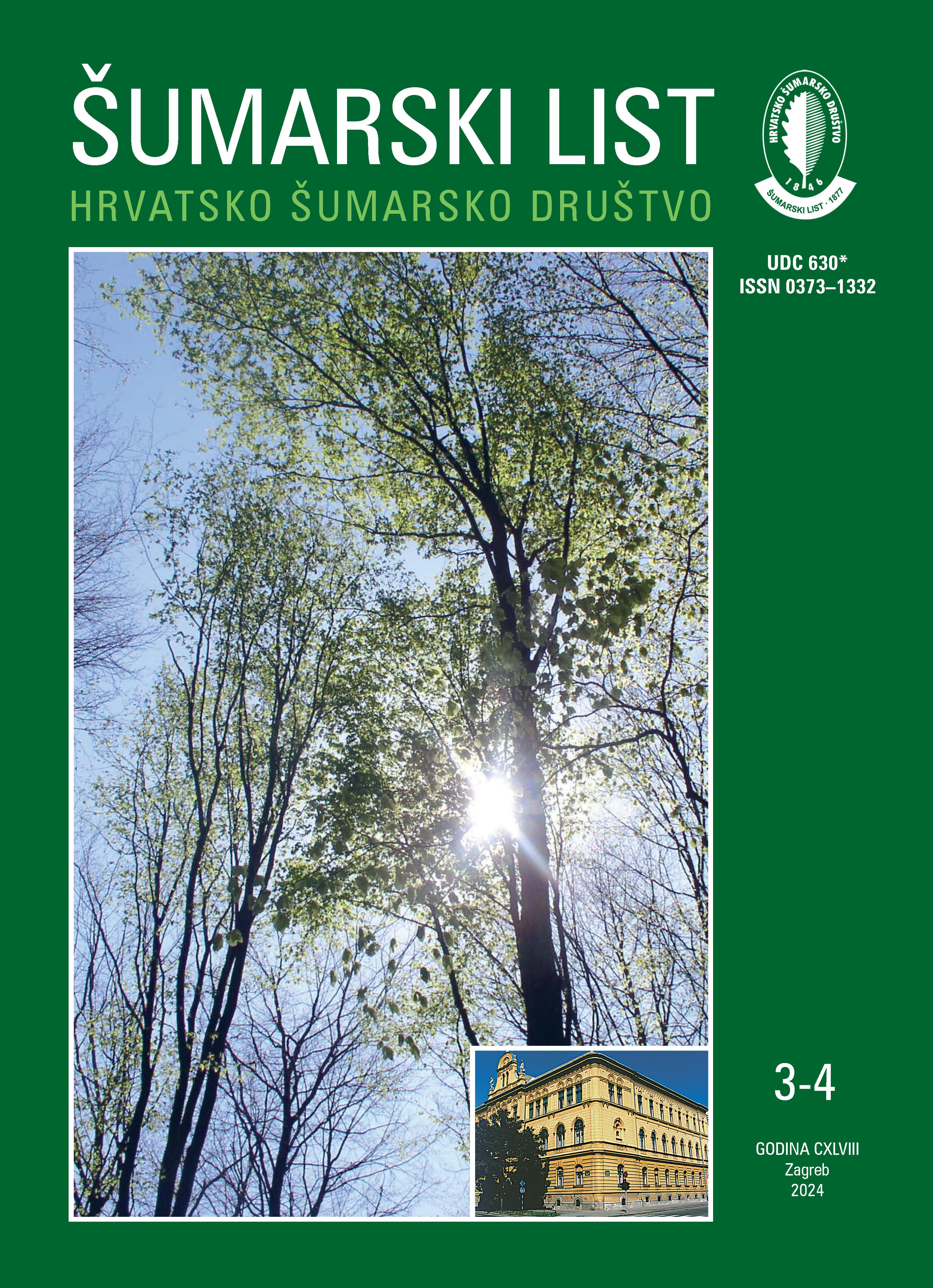Influence of desiccation sensitivity and critical moisture content on Quercus cerris, Quercus petraea and Quercus robur acorns
Keywords:
germination, oak, pedunculate oak, recalcitrant seed, sessile oak, Turkey oakAbstract
In this study, critical moisture contents and desiccation sensitivity of Quercus cerris (Turkey oak), Quercus petraea (Sessile oak), Quercus robur (Pedunculate oak) seeds were determined to see how desiccation affects acorn moisture content and germination behaviour. The moisture content of the harvested acorns was found to be 41% for Q. cerris, 46% for Q. petraea and 45% for Q. robur. The acorns were separated into sublots, sprayed with distilled water to reach their maximum moisture content and then left to dry for 18 days. There were statistically significant differences in germination as a function of desiccation time and decreasing moisture content. Initial germination was delayed. The highest moisture contents were 48% for Q. cerris, 51% for Q. petraea and 49% for Q. robur acorns. The highest water uptake was 17% in Q. cerris, 11% in Q. petraea and the lowest was 9% in Q. robur. The moisture content with a germination percentage below 50% was considered as the critical moisture content. In a period of 12-15 days after the beginning of the drying process, the acorns reached the critical moisture content. The germination percentage decreased from 83% to 43% for Q. cerris, from 100% to 44% for Q. petraea and from 97% to 43% for Q. robur as the moisture content decreased from the maximum to the critical moisture content. For Q. cerris, Q. petraea and Q. robur, the critical moisture contents at which acorns begin to lose viability were between 28-31%, 31-36% and 32-37%, respectively. The results of the present study provide guidance for nursery practices carried out on oak species, from acorn harvesting to seeding and post-seeding care.
Downloads
Published
How to Cite
Issue
Section
License
Copyright (c) 2024 Cansu Öztürk, Servet Caliskan

This work is licensed under a Creative Commons Attribution-NonCommercial 4.0 International License.


